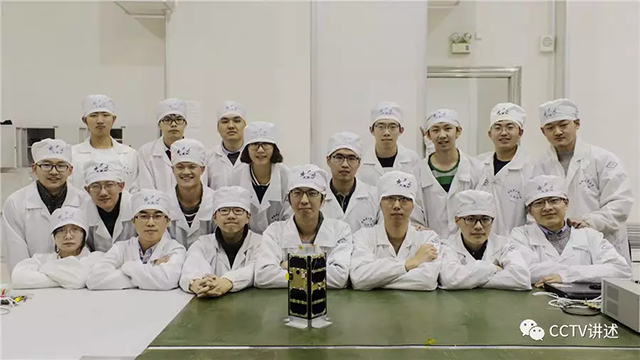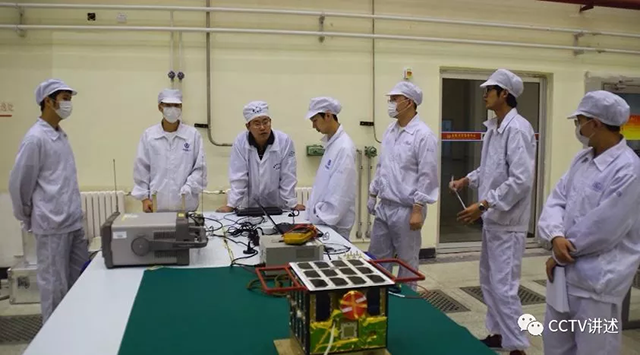Written by: ZHANG Siyi
Translated by: WANG Yumeng
Edited by: William Mosteller
Date: 5-23
ON (narrative) is a column launched by the Social Topics Department of CCTV. It takes social documentaries as its column form, records the life of the ordinary people and vividly depicts the changes of the times. Recently, CCTV ON series, "I strive, I'm satisfied", conducted in-depth interviews with Harbin Institute of Technology (HIT) Student Micro-satellite Team to let people know the story behind the satellite.
The micro-satellite innovation team of Harbin Institute of Technology has attracted more than 100 students. It has gathered undergraduates, masters and doctoral students from eight disciplines, such as aerospace, mechanics and computer science. It is praised as "a team that makes dreams come true".
On September 20, 2015, relying on the Satellite Technology Research Institute of HIT, the team successfully developed and launched Zidingxiang II, the first micro/nano satellite was independently designed, developed and controlled by College students in China. On April 18, 2017, the team independently developed Zidingxiang I and launched it into space together with other satellites involved in the international QB50 mission.
QB50 is an international network of CubeSats for multi-point, in-situ measurements in the lower thermosphere and re-entry research. This EU project is managed by the von Karman Institute (Rhode-Saint-Genèse, Belgium). The QB50 mission demonstrates the possibility of launching a network of CubeSats built by teams from Universities all over the world to perform first-class science in the largely unexplored lower thermosphere.
The team participated in the development of the Longjiang 2 micro-satellite, which was launched with the Queqiao relay satellite on May 21, 2018. At 10 p.m. on May 25, the satellite successfully entered the lunar orbit and became the first micro-satellite in the world to independently complete the Earth-Moon transfer, braking at perilune and circumlunar flight. Therefore, Harbin Institute of Technology has become the first University in the world to put spacecraft into lunar orbit. On February 15, 2019, the world's leading academic journal, Science, published a group photo of the Earth and the Moon. Behind the photograph of the “most beautiful group photo of the Earth and Moon” is a group of students, all of whom were born in the 90s.
"To explore the vast universe, to develop the aerospace industry and construct a powerful Aerospace country are unremitting pursuit of the aerospace dream." Media attention and praise have not changed the pace of the team's dream chasing. The research and development tasks of the ASRTU micro/nano satellite and the 03 constellation of Zhuhai I have come in succession. Young aerospace engineers are still working hard on the way of pursuing dreams. The team is adhering to the motto of HIT "Strictest Standard Greatest Effort", and constantly moving forward on the Space road.






